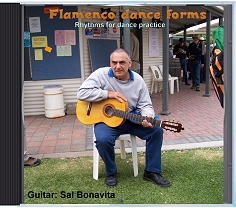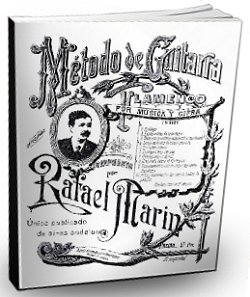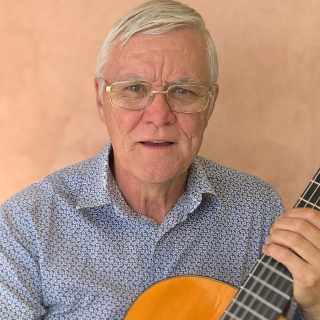
Finger RoboticsImprovising When I saw my first flamenco stage performance, I was amazed by the guitarist. It was some visiting dance group from Spain. I don't remember who they were. That's not important. What impressed me the most is that this guitarist looked really bored as he played his incredible music. He was just casually looking around at everything except his guitar and occasionally he would turn to chat with the guy doing palmas beside him.
That's when I realized that the principal of repetition did not just apply to clinically remembering a composed piece, but it also applied to improvised music.
I'm sure there were lots of well rehearsed music sequences throughout this performance, but the majority of what he played appeared to me to be improvised rhythm and spontaneous falsetas. I learned from later experience on stage and by jamming with professional guitarists that this observation was indeed the truth. Learning and repeating note for note passages is NOT what flamenco is about. There is much room for improvisation within the dance structure and compás of any given dance form.
The repetition in this case is not so much about about repeating notes or falseta passages in a certain sequence, but carefully repeating and fine tuning aspects of technique such as arpeggios, tremolo or picado. I reasoned that if the technique was as good as it could be, then you could get to a stage where technique was automatic. "Get it out of the way" I said to myself, so you don't have to struggle with it for years to come. So I took the time to break down each technique into a number of stop-start elements. These elements were repeated slowly until they became second nature to me.
Being creative with scales I'm still not the best player in the Universe, but my playing has improved 2000 percent as a result of breaking technical challenges down into bite size chunks. My skills of improvisation have also improved by playing scales in all sorts of different ways. I play a straight scale in 3s, 4s and 6s and use different finger combinations. Instead of always using "im" I also use"mi". What's the difference? Plenty. It feels different. I also play using "am" and "ma". This alone seems to improve the "mi" playing. Then I play scales using all 3 fingers "ami". Then I spend some time playing in a particular key and make up short passages and riffs with the notes of a scale. I'm not a jazz master yet, but I realize that mastering scales is ALL about repetition. There is no escaping that.
Flamenco fiddly bits There is also no escaping the truth about playing improvised rhythm and falsetas in flamenco music. New falsetas come from already memorized pieces of old falsetas. A flamenco guitarist's creative toolbox includes hundreds of falsetas that were individually worked on at some stage and perfected through repetition. In the middle of one falseta you can add a piece of another falseta, and before that bit is finished you could decide to add a fragment of yet another falseta. The result is a complete falseta that nobody has ever played before.
But it didn't come out of thin air. The bits were at some time repeated many times and well rehearsed. For an experienced flamenco guitarist, all these memory fragments are swimming around in the subconscious like hundreds of pieces from a gigantic musical jigsaw puzzle. As with the limited number of letters in an alphabet, they are capable of being creatively reassembled into literally thousands of new and unique variations (new musical words).
| ||
|

Download my CD
Flamenco Dance Forms

Flamenco guitar method 1902


